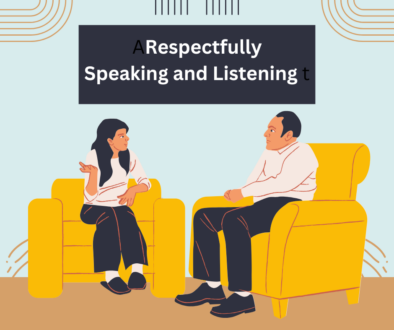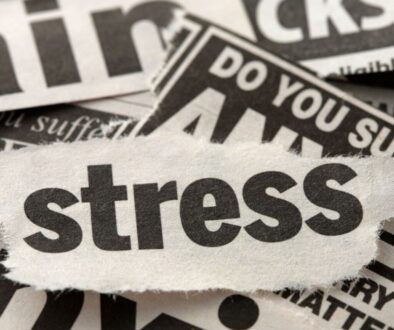Tips to Transform Patterns of Poor Communication

Transform Poor Communication
She stated firmly to my brothers and me, “I know exactly how you feel!” I thought, “No! You don’t.” At my father’s funeral one brother was feeling deep loss, another other relief, and I wasn’t sure about my third brother’s emotions. I felt confused about what I was feeling. The point is that woman was communicating the best she could with decent intentions. We’ve all have been guilty at one time or other of poor communication.
The concern is the best of relationships can go sideways if we have poor communication skills. As I’ve written before, just like fish die in dirty water but thrive in clean water, our relationships suffer, die or thrive in the sea of communication.
We might be wise to explore what dysfunctional communication patterns we habitually use. Patterns are passed down from one generation to the next. The language of children from homes of domestic violence is often very different from the sweet and innocent language of children raised in healthy circumstances. Let’s first explore how communication goes sideways.
Dysfunctional Communication Patterns
ONE: The Drama Triangle Communication Theory
From the Karpman Drama Triangle, we have clusters of words that create conflict and end up with all involved feeling angry, hurt and/or resentful.
There are three basic roles:
- Bully/Blamer/Prosecutor: In this role you blame others for your problems and feelings. Common words include, “You make me . . .,” “You are . . .” and “It’s all your fault.” The underlying message is, “I am ok and you are not.”
- Rescuer: In this role you attempt to save others from themselves. Common words include, “I feel sorry for you,” and “I’ll help you.” The underlying message is “I am ok and you are not.”
- Victim: In this role you avoid taking responsibility for yourself by positioning yourself as powerless, helpless and choice-less. Common words include, “I can’t”, “No one cares.” The underlying message is, “I am not ok and you are.”
Here is a video that describes the three roles of the Karpman Drama Triangle.
TWO: Cognitive Behavioral Therapy (CBT) Communication Therapy
CBT is based on unhelpful thought patterns, which are expressed in our conversations. Founder, Dr. Aaron T. Beck, listed dysfunctional thoughts, sometimes coined Stinking Thinking. Here are a few key examples.
- All or Nothing Thinking: Either life is horrible or glorious. The sky is sun-filled or cloudy. This thinking style does not allow noticing a rainbow or various circumstances or possibilities. People, jobs, decisions are bad or good, right or wrong. This form of thinking and communication can lead to labeling and name-calling. It sounds like this, “You didn’t offer to help. You’re a jerk.”
- Overgeneralization: A small and negative event becomes exaggerated as in “never” or “always” It sounds like, “You never listen to me.” This kind of statement is an insult to the receiver. I recall an old joke. A wife said to her husband, “You never tell me, you love me.” He responded with, “What? I told you I loved you when we got married. I’ll let you know if I change my mind.”
- Discounting the positive: The person focuses on the negative with no or little acknowledgement of effort or positive intention or contribution. It sounds like, “Yes, you washed the dishes but look at this dirty fork!” If what we focus on expands, this habit destroys any sense of others feeling appreciated.
- Mind Reading or Jumping to Conclusions. Self-talk or imagining the negative about another person seems like a fact. It sounds like, “You take me for granted.”
- Emotional Reasoning: Emotions are translated into being a truth. It sounds like, “I feel stupid so I must be.”
- Should, Must, Ought to and Have to: These words are used to guilt ourselves or others into behaving in certain ways. It sounds like, “You should agree with me.” The result is typically frustration and resentment.
THREE: Marriage Research Communication Findings
From the relationship researcher, Dr. John Gottman, are these communication patterns that signal a troubled relationship.
- Criticism is the act of finding fault. It has the intent of making yourself right and the other wrong. Troublesome criticism includes judging the other’s character.
- Contempt shows up in disrespectful words and body language. Negative comments include insults, name-calling, caustic humor, sarcasm or mockery. Contemptuous body language includes sneering and eye rolling.
- Defensiveness is positioning yourself as a victim of an attack. When you are defensive and do not take responsibility for your part of the conflict, you are not open to change.
- Stonewalling is withdrawing from the relationship to avoid conflict. You may think you are acting in a neutral way. But when you withdraw, use the silent treatment or cut off, you convey disapproval, distance and/or smugness. Some typical stonewall responses are stony silence, changing the subject, hanging up the phone or leaving.
FOUR: Ten More Dysfunctional Communication Patterns
- Using but: The word, but, negates the words said before it. “I love you, but your breath is bad.” Notice the difference when we move the word. “Your breath is bad, but I love you.” Or notice what the same information sounds like when we replace but with and. “I love you and your breath is bad.”
- Asking only Yes/No Questions. We connect better when we ask open-ended questions beginning with when, where, how, and who.
- Saying words that do not match your emotional tone of voice, emotions and body language.
- Not listening, defending your position, and/or using poor listening skills.
- Avoiding hard conversations. Letting resentment and problems build.
- Not asking for what you want. Failing to accept responsibility and asking directly for changed behaviour.
- Lacking emotional regulation which can result in name-calling, yelling, and screaming.
- Unwilling to repair a relationship breakdown, take responsibility for your part, and consider making an apology.
- Failing to accept responsibility for your part of the problem. That includes, not bringing up a problem until it is very painful to discuss and resentment has built.
- Bringing up problems at the wrong time without first creating emotional safety to do so.
Terrified to Start a Conversation? Help is HERE!
Before you speak, ask “Is it honest? Is it kind? Is it necessary?” A Buddhist reflection
More productive ways to manage relationships include:
- Believing each person is doing their best with positive intentions.
- Realizing that most people’s poor judgements and behaviours were developed as childhood coping mechanisms to keep them safe. Now those coping mechanisms are unconscious and ineffective in building healthy relationships.
- Sharing what we want from others while expecting to hear yes, no, maybe, or it depends.
- Having clear boundaries about how we will be treated or spoken to while bringing closure. For example, “I will not stay here if you call me a brat again. If you do, I am leaving.”
- Checking our understanding and asking, “Do you mean . . . ?”
- Thanking others for helping, listening, caring, and sharing their thoughts and feelings.
- Scheduling formal gripe sessions, with an emotionally safe confidante, to prevent the spillover of everyday stress.
- Acknowledging and respecting each other’s deepest, most personal hopes and dreams.
For Challenging Conversations Use this Structure
Speaker: (Own YOUR Problem and YOUR feelings)
- “I have a problem. I’d like your help. Is this a good time to talk?” If not, agree on a mutually convenient time.
- Sit. Consider placing the Drama Triangle in front of you to monitor your communication.
- State your problem. Begin sentences, as much as possible, with “I (heard, saw, thought, think, agree, disagree, feel, am triggered to feel, want) . . .”
Example: “My problem is, I feel unacknowledged and unappreciated for the contributions I have made to our family.”
Note: Speak no more than 3 minutes.
Listener: If you agree to listen, then Seek to Understand.
- Seek to understand what the speaker is feeling and wants. As often as seems appropriate say, “Tell me more.” You don’t need to fix the others’ feeling. Just nod and say something like, “Ok” or “Right!”
- When the speaker’s feelings have calmed down ask, “Do I understand you to say?” Try as accurately as possible to mirror back the speaker’s thoughts and feelings. Remember, often the speaker’s desire is to be seen, heard and acknowledged.
- Check that you were heard correctly, “What did you understand me to say?’
- Then ask, “What can I say or do to help you?”
Close: Agree on what is helpful OR go through the above process again.
Note: If you, as the listener, have a problem that surfaces, put it aside until the problem on the table is resolved. Then make a request for your problem to be addressed, maybe at a later date.
Please share how you improved some aspect of your poor communication and the positive result. I just know you have the capacity to learn, grow, and develop healthy and resilient relationships.




